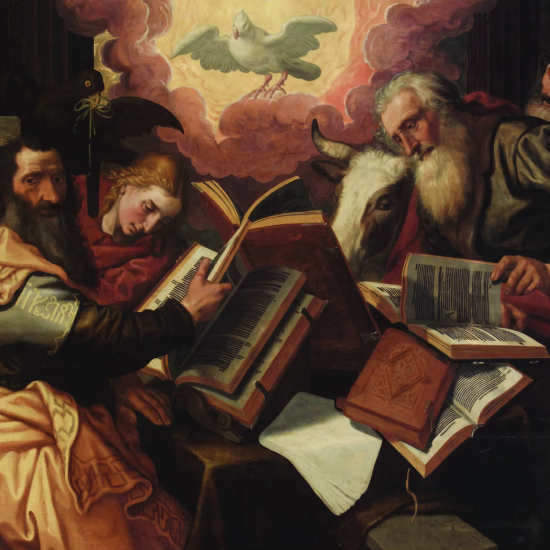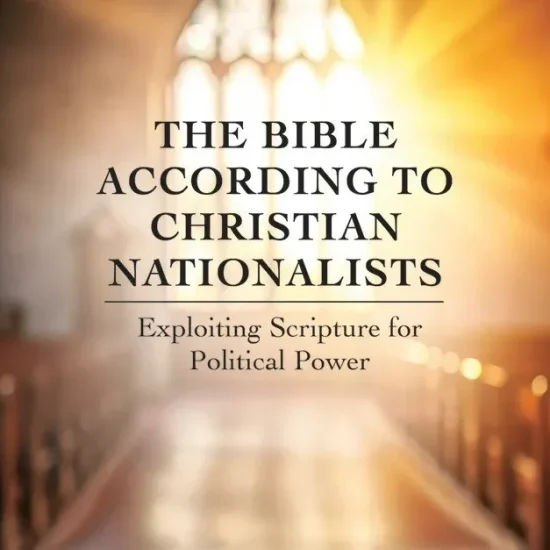

GOD’S MONSTERS: Vengeful Spirits, Deadly Angels, Hybrid Creatures, and Divine Hitmen of the Bible. By Esther J. Hamori. Minneapolis, MN: Broadleaf Books, 2023. Vii + 296 pages.
God is good, all the time. Or so we’ve been taught. God must be good because, well, God is love. We know this because Jesus is love incarnate. Isn’t that what the Bible says? Well, yes and no. The biblical story and its message about God is rather complex. In fact, it’s a lot more complex than perhaps we would like to believe, especially those of us who want to emphasize God’s love. For those brave enough to consider a fuller picture of the way the Bible speaks of God and the way God works in the world, Esther J. Hamori has written a book for you. Just be warned, it doesn’t offer us a tidy, pretty, attractive picture of God. That’s because it invites us to explore the world of God’s Monsters. Yes, you read that correctly, God’s Monsters. If you need more information as to what you might find in Hamori’s book God’s Monsters, consider the subtitle: Vengeful Spirits, Deadly Angels, Hybrid Creatures, and Divine Hitmen of the Bible. This is not the story of The Littlest Angel that I encountered as a child. The cherubs we encounter in this book (and in Scripture) look nothing like the winged infants that we’ve become accustomed to through art and story.

Robert D. Cornwall
God’s Monsters is the handiwork of Esther Hamori, Professor of Hebrew Bible at Union Theological Seminary. This book, which I received as an advanced reader’s copy from the publisher, has its roots in a class she has taught at Union and at Jewish Theological Seminary, a class that apparently is very popular, called “Monster Heaven.” Besides the “Monster Heaven” class, Hamori, just in general, appears to be interested in biblical things that go bump in the night (it is appropriate that this book is destined to be released on Halloween). Besides the class and this new book, Hamori has written several academic books that look into things that are a bit eerie including some divine-human encounters that are concerning, again to those of us who want to think of God being nice to everyone.
Hamori titles her introduction “Monster Heaven,” reflecting the name of the class that gave birth to the book. In this introductory chapter, Hamori informs us that “the biblical world is full of monsters. Uncanny creatures lurk in every direction from the hybrid monsters surrounding God in heaven to the stunning array of peculiar beings touching down on earth and from giants in the land of milk and honey to Leviathan swimming beneath the seas” (p. 1). While most of these monsters have been tamed as time has passed, a closer look at the stories reveals something that might be disconcerting. Just one example will suffice here. You know those angels everyone loves, the ones that fit on Hallmark cards, according to Hamori, they are actually “some of the deadliest shapeshifters in a universe teeming with bizarre figures” (p. 1). So, are you intrigued or repelled by what I’ve shared so far? If you are intrigued, there is more to come. The message offered here is that some of the pictures the Bible paints of God and the way God works in the world are not pretty. In fact, they can be rather horrifying. While the lectionary might steer us clear of some of these realities, it’s best that we face them. After all, they lie there in plain sight.
We might begin (again in the introductory chapter) by defining what a monster is. The first answer to the question of what makes a monster is that when it comes to the Bible the monsters found within its pages don’t have a defining trait. They come in all sorts of shapes and sizes. Nevertheless, they tend to have a few commonalities. For one thing, they tend to be giant. They also tend to have superhuman or supernatural strength or powers. As Hamori points out, one of the most common traits found in biblical stories is that of physical hybridity, such as the mixture of two or more species (think here of the centaurs of mythology if not Scripture). They might also be shapeshifters who take different forms at different times. Here is the point of the book, these biblical monsters may demonstrate something about the biblical God’s nature. As Hamori notes, we should be prepared because “God’s nature isn’t always so benevolent. In fact, this God may be the monster of monsters” (p. 7). Yes, you read that correctly, if we look deeply into Scripture, we might discover that the biggest monster of all is God. The majority of the monsters we encounter in this book form God’s entourage; God’s army if you will. They may be coming after you (and me)! Of course, as Hamori notes, our translations and interpreters may have toned things down a bit, domesticating the monsters, but here we see things more clearly. That may not sit well. This isn’t the kind of book you give to someone who doesn’t have any background in the Christian faith and isn’t ready to see the nuances of the biblical picture of God and God’s activity in the world. It simply might prove too overwhelming. That said, Hamori’s God’s Monsters is a deep, thought-provoking, and for the most part, accessible book.
Hamori divides God’s Monsters, which is geared toward a more general audience who has at least some biblical training, into three parts. Part 1 focuses on “God’s Entourage” (chapters 1-6). The members of God’s entourage include the Seraphim (Chapter 1), fiery snakes called upon by God to scare people into obedience to God. That is, they are called upon to “reinforce behavioral boundaries and social norms” (p. 37). Then there are the cherubim who are not, as we have been led to believe in some quarters, infant-like cherubs. Instead, they are “a type of hybrid guardian monster found all over ancient Southwest Asia and the Mediterranean” (p. 41). They serve as God’s border guards. In other words, they are called upon by God to prevent the passage of entities between realms. A good example of such beings, besides the guards preventing a return to the Garden, are the four living creatures of Ezekiel. The next member of the entourage is “The Adversary” (Chapter 3). The Adversary is also known at points as Satan, the entity we encounter in Job who works for God. One thing to note is that Satan is never given a physical description. Thus, this being can travel back and forth, “going from nondescript heavenly bureaucrat to full-on red dragon” (p. 77). Not to be confused with the Adversary is “The Destroyer and Other Angels” (Chapter 4). Here we might want to think in terms of the angel of death in the book of Exodus. While we might want to think of angels as simply God’s messengers (think Gabriel), they fulfill other duties as well. Among those duties include that of mass destruction, a job given to the one known as the Destroyer.
We see this activity revealed in the Tenth Plague of Exodus, the killing of the firstborn of Egypt. But this is not the only occasion in which God’s Destroying Angel is set loose. There are other angel stories that will leave the reader unsettled, but again we need to hear them to get the full picture. As such, Hamori notes that “among the many monstrous creatures in the biblical heavens, angels are the most like us. They are the most human of monsters, not just in their sometimes-anthropomorphic appearances, but in their characters” (p. 133). Then in Chapter 5, we meet “Demons in God’s Ranks.” Yes, there are demons in God’s ranks. They exist to cause harm as they are linked to plagues, pestilence, and disease. Why are there demons in God’s ranks? Consider the message that God is the one who takes vengeance. But, we’re not finished with God’s entourage. We still must meet up with the “Manipulative and Mind-Altering Spirits” (Chapter 6). Consider here the spirit sent to torment Saul because Saul disobeyed God’s command or there is Abimelech and Ahab, rulers who are misled for the purpose of judgment. We see the deceiver active in the New Testament as well, as God sends deceit for a purpose, so test the spirits. Though in the New Testament, most of the monstrous acts are attributed not to God but to Satan who is now the father of lies. As you can see from these chapters, God’s entourage is a rather shady group of characters.
Part 2 introduces us to “The Monsters Beneath.” Here we encounter the sea monsters, including Leviathan. We learn here that the sea monsters are meant to be killed, and that the first enemy of God is the sea monster, Leviathan. While Leviathan is at one point God’s enemy, with whom God does battle, it appears that God seems to have special affection for Leviathan. Consider the words of Psalm 104 which tells us that God created Leviathan to play with. There is much more to explore when it comes to the role sea monsters play in the biblical story. There is also a chapter dealing with “Shades, Ghosts, and Other Living Dead.” In this chapter, we encounter Sheol and how the dead are portrayed (everyone goes to Sheol). She brings into this chapter the story of Saul’s attempt to contact the spirit of Samuel. For those interested in the concept of Hell, she deals briefly with it as well. Finally, in chapter nine, Hamori explores the stories of the Giants. There are two kinds present in Scripture. There are the giants who are essentially divine beings living in heaven, and people living on earth (think Goliath). It’s the second kind of giant that is most present in Scripture. She speaks here of “monsterization,” in which people are spoken of as being monstrous. One explanation for these “mighty men” of old is that they are the product of sexual relations between sons of God and daughters of man. We know these giants as the Nephilim. Here is an important word for us to consider: “These giants aren’t monsters—they’re human beings who have been monsterized. And specifically, they’re foreigners. The Israelites encounter group after group and individual after individual who are primarily identified as foreigners, and secondarily as giants” (pp. 254-255).
The final section of the book is the briefest. In Part 3, titled “The God-Monster,” Hamori offers one chapter (Chapter 10), which is titled “The Monster of Monsters, the Wonder of Wonders.” Here Hamori addresses the complex biblical picture of a very complex God, who is very good, but at times very bad. This biblical God does appear to do bad things through God’s monsters. She writes that “every single type of divine being shown acting in God’s service in the Bible injures, threatens, tortures, or kills on his command” (p. 265). Yes, and God takes on many of the qualities of God’s monsters, such that we are commanded to fear God. Now we may make this command palatable by turning fear into awe (I’m comfortable doing that) but there is reason to fear this God, at least as God is portrayed in Scripture. Nevertheless, God is also wonderful. While Hamori has highlighted the stories of God’s monsters and God’s own monstrous acts, the Bible also highlights God’s goodness, “describing God’s love, mercy, and everlasting faithfulness; passages that uplift the weary and sustain the desolate, that bring a sense of hope and peace to the devastated” (p. 268). Both sides of God’s story are present in Scripture. Hamori wants us to understand that we can’t just embrace the stories of God’s mercy and set aside the monstrous stories. As I noted earlier, this is not an easy book to digest. It reveals things that we will find disconcerting (at least I hope so).
Taken as a whole God’s Monsters is a book that should prove unsettling. However, it also serves as a good reminder that the biblical story is complex. It offers a multi-dimensional picture of God and God’s relationships with creation. Some of these pictures of God and God’s entourage will make us uncomfortable. So, as I pointed out above, threaded throughout Scripture are passages that portray God’s goodness, love, and mercy along with those that depict “God doing violent and twisted things, the passages that pull back the curtain and reveal the God-monster.” (p. 268). Then again, as Hamori demonstrates, we see examples within Scripture of people pushing back on God’s monstrous acts. This permits us to do the same. What Hamori invites us to do here in God’s Monsters is “embrace the rich diversity of perspectives within [the Bible’s] pages.” (p. 269). Therefore, when we read and contemplate the more troubling depictions of God and God’s entourage, we encounter a “vital dimension to the diverse anthology we call the Bible, as these writers grappled with the messiness of the world and God’s place in it.” (p. 271). It will take courage to engage with this book, but for those who have the necessary courage, it will open the reader’s eyes to the nature of the biblical story and God’s place in it. It will provide the reader with tools to interpret and apply what we find in scripture with discernment.
This review originally appeared on BobCornwall.com.
Robert D. Cornwall is an ordained minister in the Christian Church (Disciples of Christ). Now retired from his ministry at Central Woodward Christian Church (Disciples of Christ) of Troy, Michigan, he serves as Minister-at-Large in Troy. He holds a Ph.D. in Historical Theology from Fuller Theological Seminary and is the author of numerous books including his latest “Second Thoughts about the Second Coming: Understanding the End Times, Our Future, and Christian Hope” coauthored with Ronald J. Allen. His blog Ponderings on a Faith Journey can be found at www.bobcornwall.com.






